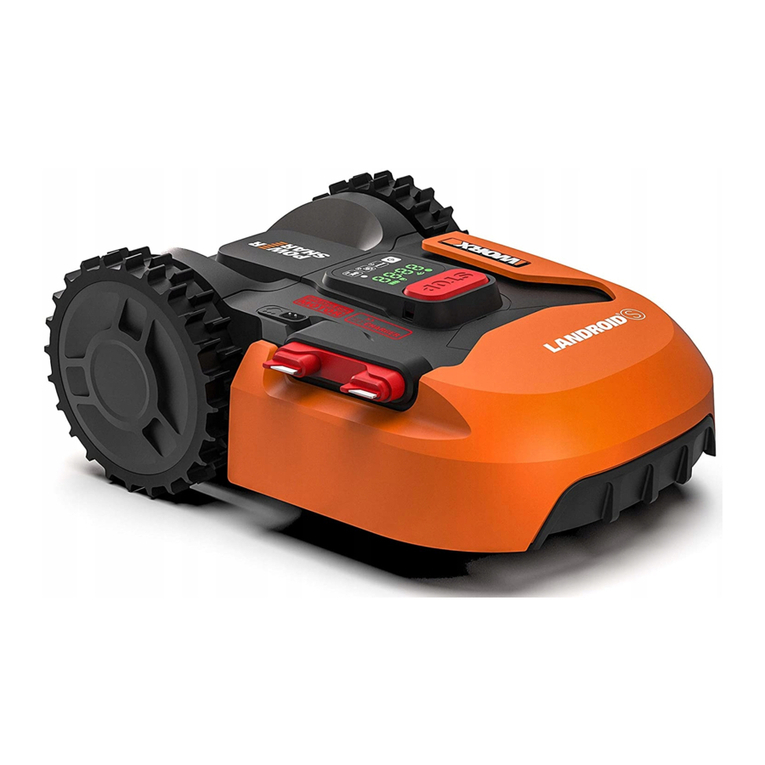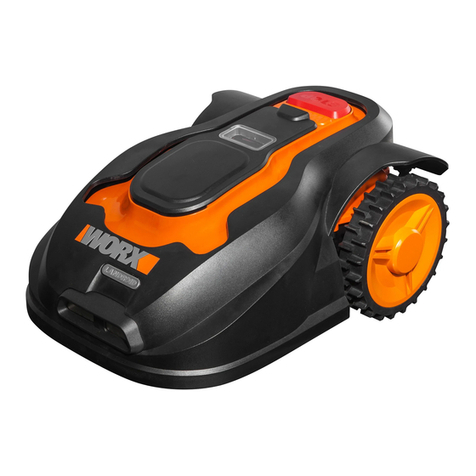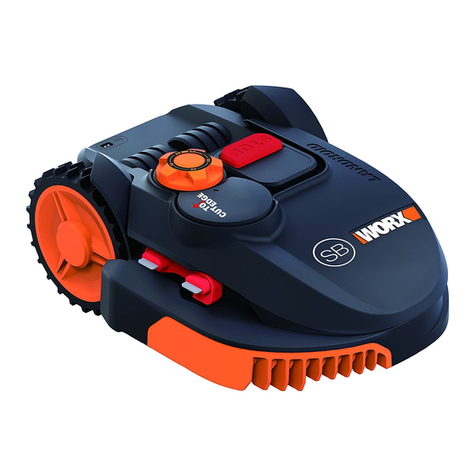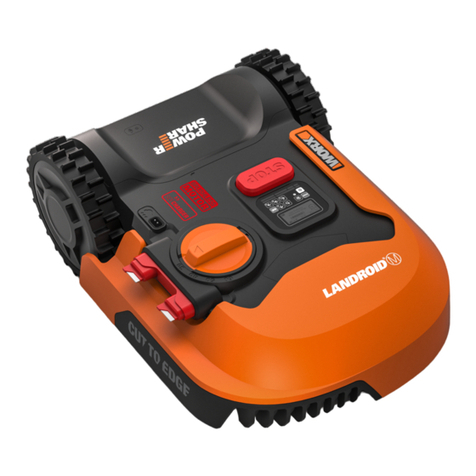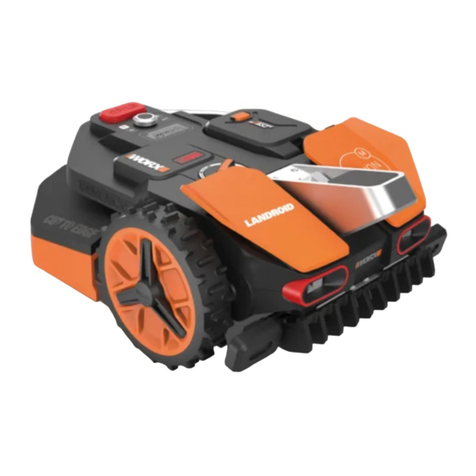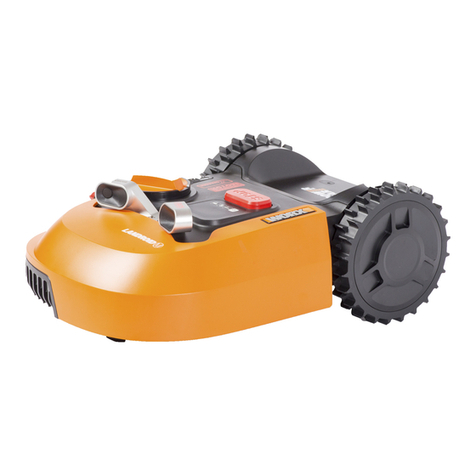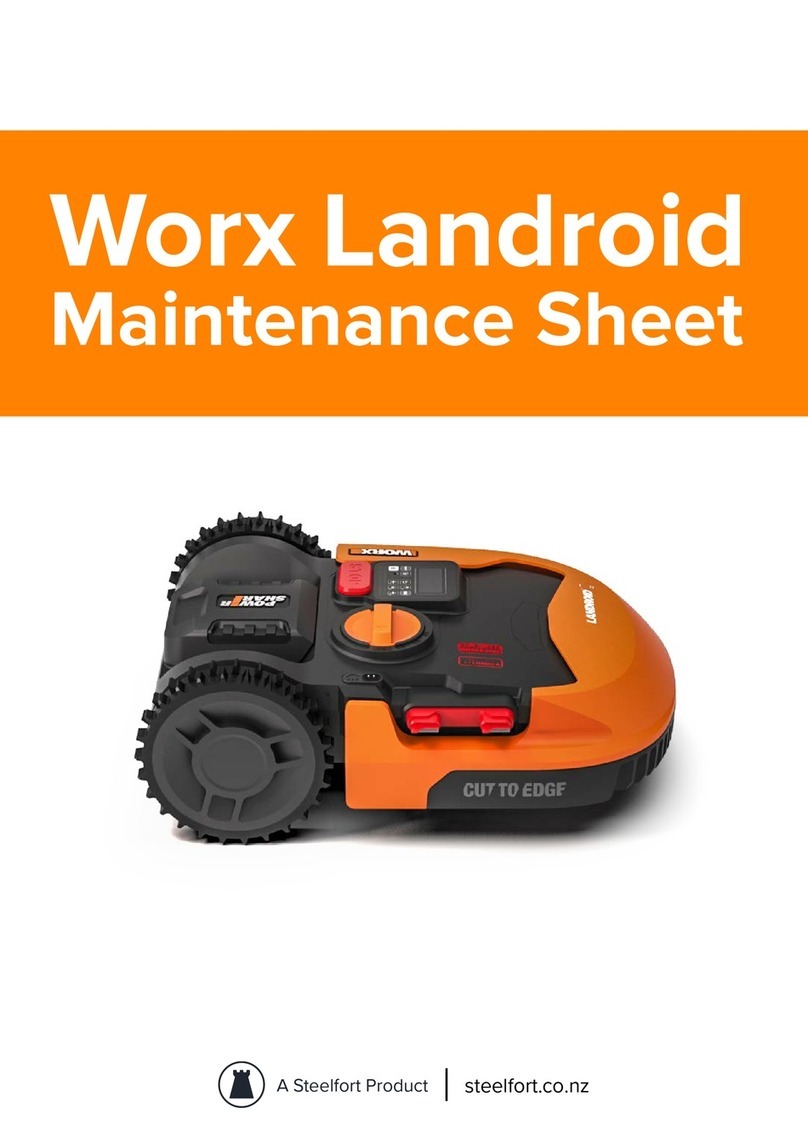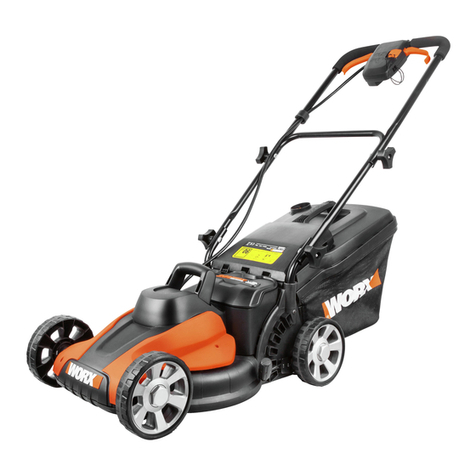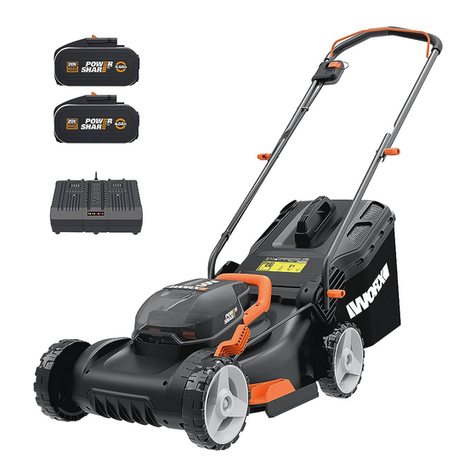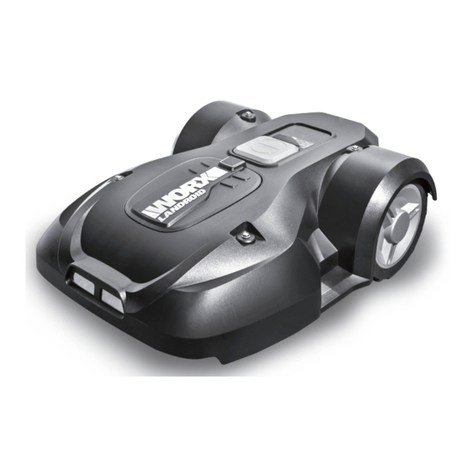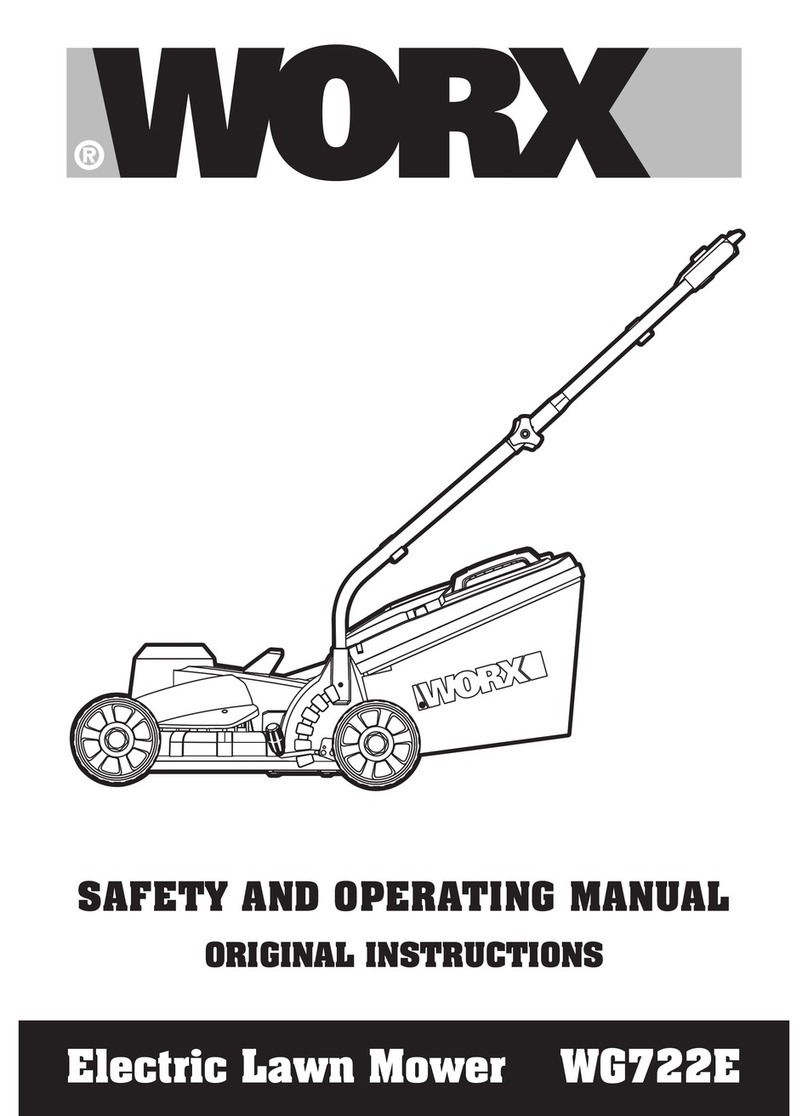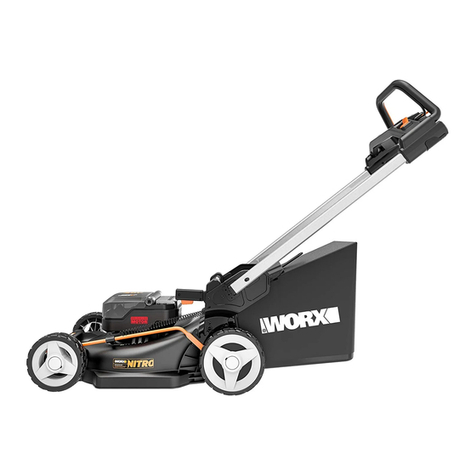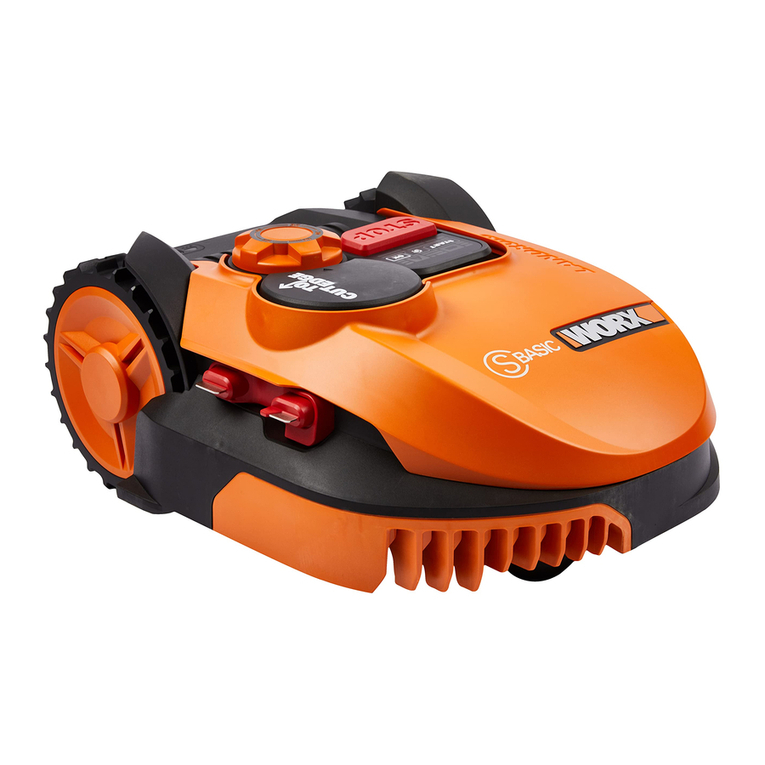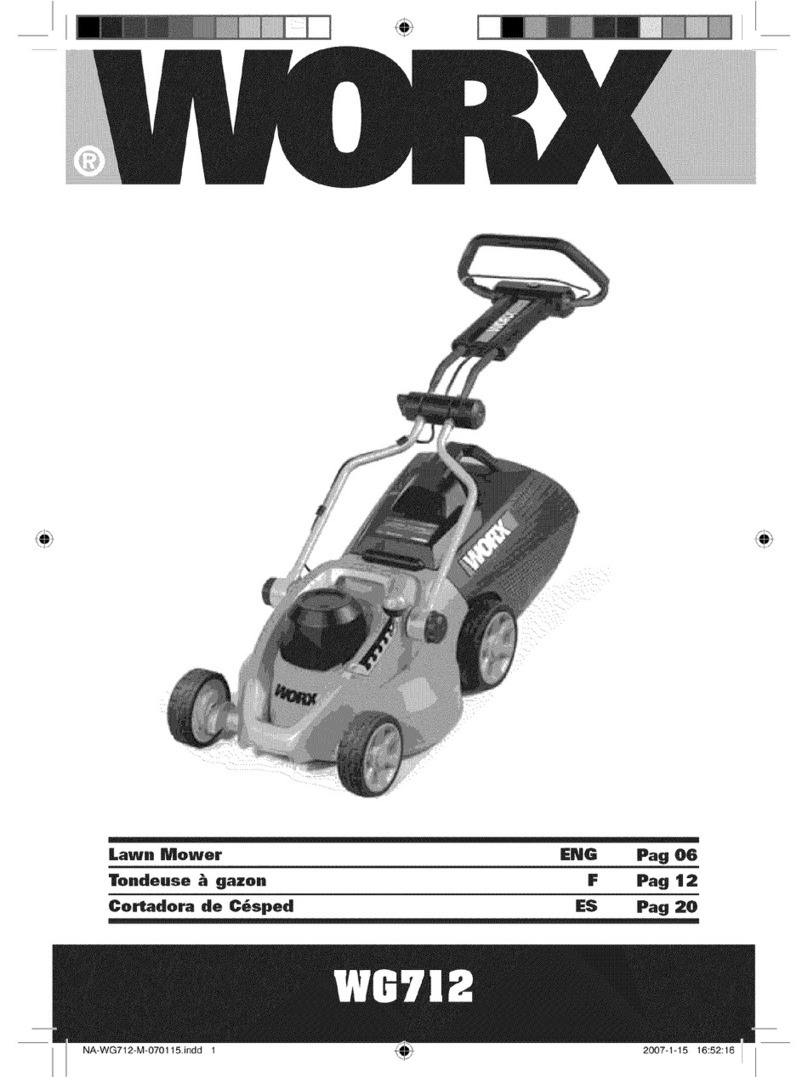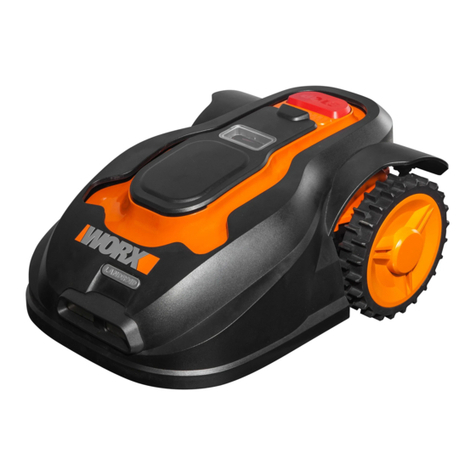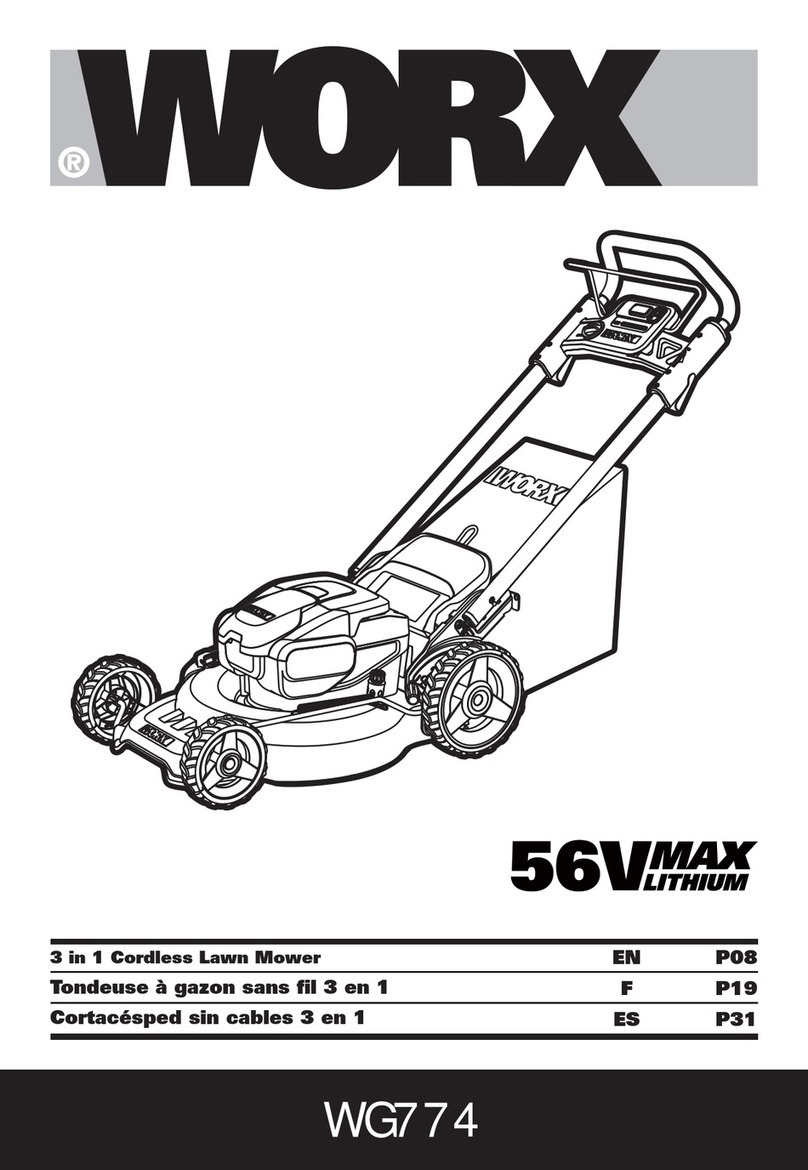working outdoors.
5) Use safety glasses - Always use face or
dust mask if operation is dusty.
6) Use right appliance - Do not use lawn
mower for any job except that for which it
is intended.
7) Ground Fault Circuit Interrupter (GFCI)
protection should be provided on the
circuit(s) or outlet(s) to be used for the
lawn mower. Receptacles are available
having built-in GFCI protection and may
be used for this measure of safety.
8) Warning -To prevent electric shock use
only with an extension cord suitable for
outdoor use, such as SW, SOW, STW,
STOW, SJW, SJOW, SJTW, or SJTOW.
9) Extension Cord - Make sure your
extension cord set is in good condition.
When using an extension cord, be sure
to use one heavy enough to carry the
current your product will draw. For
lengths less than 14/12_No. 25/50_AWG
extension cord should be used. An
undersized cord will cause a drop in line
voltage resulting in loss of power and
overheating. (NOTE:Table 1 shows the
correct size to use depending on cord
length and nameplate ampere rating. If
in doubt, use the next heavier gage.The
smaller the gage number the heavier
the cord.)To reduce the likelihood of
disconnection of lawn mower cord from
the cord set during operating:
i) Make a knot as shown in Figure 1, or
iI) Use one of the plug-receptacle retaining
straps or connectors described in this
manual.
10) Don’t abuse cord - Never pull lawn
mower by cord or yank it to disconnect
from receptacle. Keep cord from heat, oil,
and sharp edges.
11) Don’t force lawn mower - It will do the
job better and safer at the rate for which it
was designed.
12) Don’t overreach - Keep proper footing
and balance at all times.
13) Stay alert - Watch what you are doing.
Use common sense. Do not operate lawn
mower when you are tired.
14) Disconnect lawn mower - Disconnect
the lawn mower from the power supply
when not in use, before servicing, when
changing accessories such as blades, and
the like.
15) Store idle lawn mower indoors - When
not in use, lawn mower should be stored
in an indoor dry and locked-up place - out
of reach of children.
16) Maintain lawn mower with care - Keep
cutting edges sharp and clean for
best and safest performance. Follow
instructions for lubricating and changing
accessories. Inspect lawn mower cord
periodically and if damaged, have it
repaired by an authorized service facility.
Inspect extension cords periodically and
replace if damaged. Keep handles dry,
clean, and free from oil and grease.
17) Keep guards in place and in working order.
18) Keep blades sharp.
19) Keep hands and feet away from cutting area.
20) Objects struck by the lawn mower blade
can cause severe injuries to persons.
The lawn should always be carefully
examined and cleared of all objects prior
to each mowing.
21) If lawn mower strikes a foreign object,
follow these steps:
i) Stop lawn mower. Release the switch.
ii) Unplug power cord.
iii) Inspect for damage.
iv) Repair any damage before restarting
and operating the lawn mower.
22) Use identical replacement blades only.
Table 1
Minimum gauge for extension cords
Ampere rating Volts Total length of cord
in feet
120V 25 50 100 150
more
than not more
than
AWG
0
6
10
12
6
10
12
16
18
18
16
14
16
16
16
12
16
14
14
14
12
12
Not
recommended
NOTE-Only the applicable parts of theTable
need to be included
